It's a Big Blue World - Keeping Our Oceans Sustainable
Introduction | Background Knowledge | Activities | Extensions | Standards
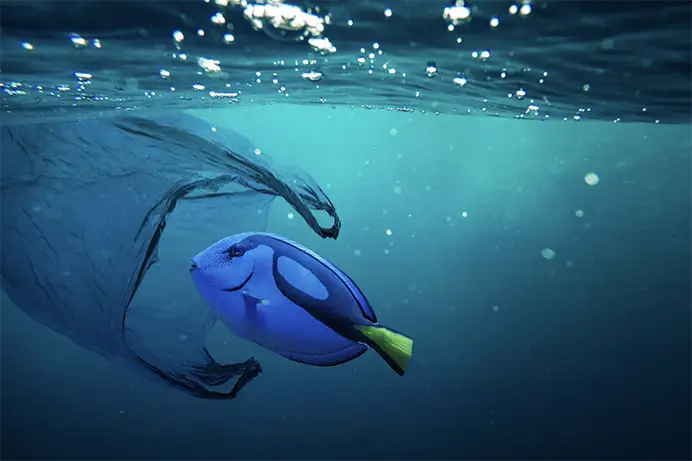
Introduction
One-third of people on Earth live within 100 miles of the ocean. The ocean holds 97% of the world's water. Ninety-nine percent of the habitable space on Earth is ocean. The world's smallest organisms and the world's largest organisms live in the oceans. The oceans also provide miles of coastline that people use for recreation, which fuels economies through tourism.
Our oceans are at risk. With over 3 billion people relying on the oceans for their livelihoods, it is crucial to conserve and sustainably use the oceans to allow people to continue to care for their families for generations.
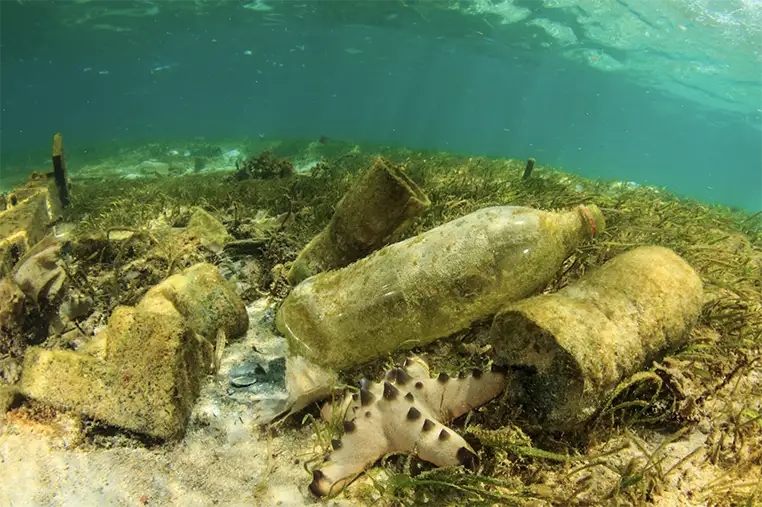
Click the image above to read more about the UN's Sustainable Development Goal #14.
Background Knowledge
About 71% of the Earth's surface is covered by ocean water. The ocean is a massive habitat where an estimated 90% of the living things are not classified. Life in the ocean is threatened by human activity. By 2050, the trash in the oceans will outweigh the fish. Plastic and garbage are collecting into giant "garbage patches." There are at least five around the world, with the largest being the Great Pacific Garbage Patch, which is twice the size of the state of Texas. As the plastic in the oceans slowly breaks down, harmful chemicals are released into the water.
In addition to pollution, human activity has caused dead zones around the world. The number of dead zones, or areas in the ocean that do not have enough oxygen to support life, have grown from 400 in 2008 to 700 in 2019. The second-largest dead zone on Earth is the northern Gulf of Mexico, along the southern coast of the United States.
The world's oceans absorb many of the carbon emissions created by burning fossil fuels. This causes the pH of the oceans to turn more acidic. The acidification of the oceans bleaches coral, kills shellfish like clams, mussels, coral, and oysters, and can make it harder for predators to locate their prey.
The earth has 372,000 miles of coastline. Many people live and work along the shore, including over 3 billion people who make their living from the sea. Many areas are not protected and in addition to pollution and acidification, fisheries are dying.
United Nations Sustainable Goal 14 focuses on life below water and pledges to "conserve and sustainably use the oceans, sea, and marine resources for sustainable development."
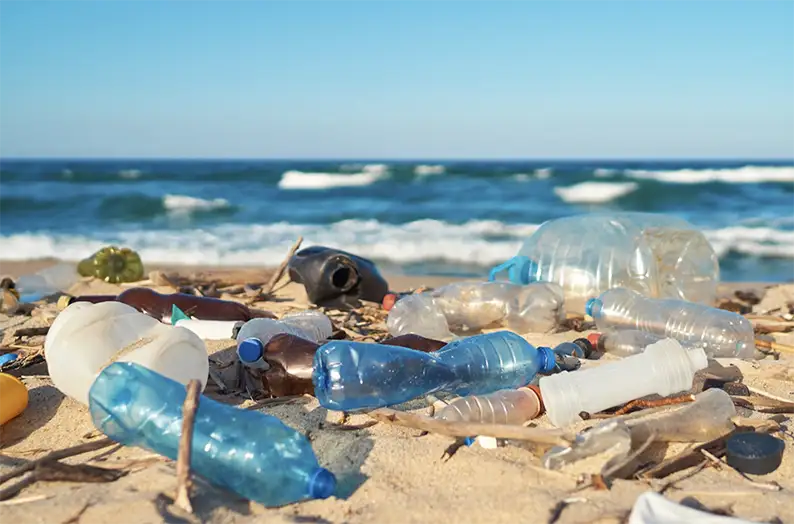
ACTIVITIES
-
UN Target 1 - By 2025, prevent and significantly reduce marine pollution of all kinds, in particular from land-based activities, including marine debris and nutrient pollution.
- 14 million tons of plastic end up in the world's oceans each year. These plastics kill marine life and pollute the ocean level from the surface to the deep sea.
-
READ
-
The Mess that We Made by Michelle Lord (ISBN 9781947277144)
- Four children observe the mess in the ocean around them in this cumulative tale.
-
Lobstah Garden by Alli Brydon (ISBN 9781728232461)
- Walter and Milton are neighbors who love to garden. They have a healthy competition until they have to work together to combat the pollution that keeps falling into their gardens.
-
The Blue Giant by Katie Cottle (ISBN 9781843654452)
- Coral and her mom get a visit from the ocean during their trip to the seashore. As they investigate, they find pollution in the ocean. At the ocean's urging, they begin cleaning it up.
-
Ducks Overboard! The True Story of Plastic in Our Oceans by Markus Motum (ISBN 9781536217728)
- This book, told from the rubber duck's perspective, is the story of how plastic moves through the ocean, polluting the sea and the shore.
-
Plastic, Ahoy!: Investigating the Great Pacific Garbage Patch by Patricia Newman (ISBN 9781467712835)
- Three researchers join the SEAPLEX expedition to the Great Pacific Garbage Patch to learn how plastics impact life in the open ocean.
-
The Mess that We Made by Michelle Lord (ISBN 9781947277144)
-
WATCH
- How Can We Keep Plastics Out of the Ocean by National Geographic
- Plastic Disaster: An Ocean Pollution Documentary
- Preventing Plastic Pollution
- Includes discussion questions and activities
- Trash Talk: What is the Great Pacific Garbage Patch?
-
DO
- June 8 is World Ocean Day. Check out World Ocean Day for Schools. Get your school involved in the Our Blue Challenge. Watch live lessons on World Ocean Day that are also available throughout the year. There are also lesson plans and resources for a variety of age groups.
- For younger learners, create a hands-on model of ocean pollution.
- Explore the Algalita website (TeachersFirst review). Learn more about plastic pollution in the North Pacific Ocean at this terrific site. Be sure to check out the Projects and Solutions to explore the accomplishments of students from around the world.
- Visit The Ocean Cleanup to learn more about ocean pollution and the Great Pacific Garbage Patch.
- Join the Plastic Free July Challenge. (If school is out, designate another month and challenge students to go plastic free.) The site also has resources to support the challenge.
- Examine local sand for microplastics with this experiment.
- Visit Ocean Plastic Map to learn about coastal areas around the globe fouled by plastics and other debris, the sources of the pollutants, what is being done to remedy the situation, and what more needs to be done by simply clicking on one of the icons on the map.
- Play Test your Knowledge of Ocean Plastics using Kahoot (TeachersFirst review).
-
UN Target 2 - By 2020, sustainably manage and protect marine and coastal ecosystems to avoid significant adverse impacts, including by strengthening their resilience and take action for their restoration in order to achieve healthy and productive oceans.
- Marine and coastal ecosystems are impacted by pollution. There are impacts to the living things in the ecosystems, and they need to be protected.
-
READ
-
Saving American Beach by Heidi Tyline King (ISBN 9781101996294)
- This book is the story of environmentalist MyVynee Betsch and how she saved American Beach.
-
What Happens if We Overfish the Oceans? by Angela Royston (ISBN 9781625881625)
- This book discusses overfishing and how to fish sustainably in an inquiry format.
- World Without Fish by Mark Kurlansky (ISBN 9780761185000)
-
Saving American Beach by Heidi Tyline King (ISBN 9781101996294)
-
WATCH
- Visit a Sea Garden with Roy Henry Vickers and Kay Weisman
- Why the Ocean Matters
- How to Care for the Ocean
-
Sustainable Seafood
- Includes discussion questions and activities
-
DO
- Learn more about coastal ecosystems from NOAA.
- Review this lesson plan from the Smithsonian. Focus on the Sea Connections card game, which can extend into a discussion about overfishing.
- Learn about conserving the beach ecosystem with information from USC Santa Barbara.
- Check out the lesson plans from Sailors for the Sea. The plans are free, but you will need to register.
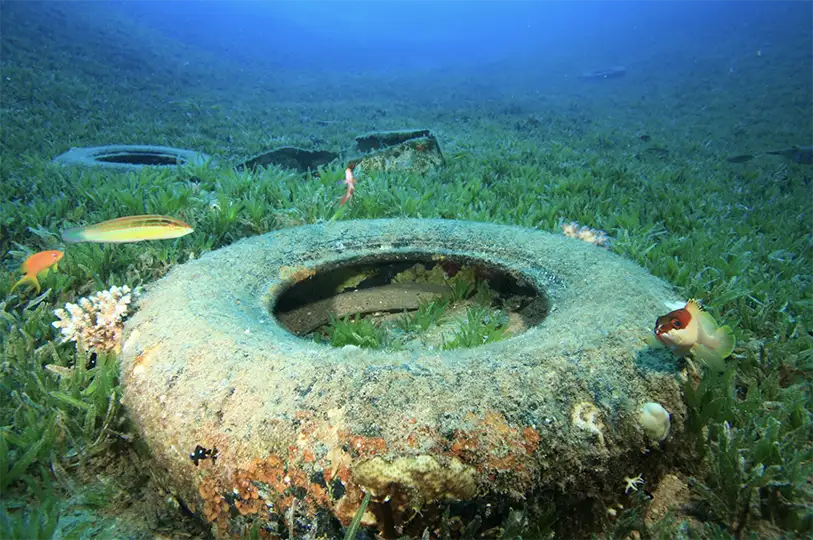
EXTENSIONS
Saving the Oceans
- Sea Going Green has three sustainability projects across the globe. After researching these projects, students can create their own sustainability project to help keep the oceans clean or to support sustainable ecosystems. If possible, students can test their projects in a local waterway.
- Explore Coral Bleaching on NASA's Climate Kids (TeachersFirst review) by changing the environmental conditions, such as temperature, precipitation, and pollution levels.
Sustainable Fish Diner
- Students can create a menu for a mock seafood restaurant. After researching sustainable seafood, students can create their menus using art supplies or Canva (TeachersFirst review) for a technology integrated option.
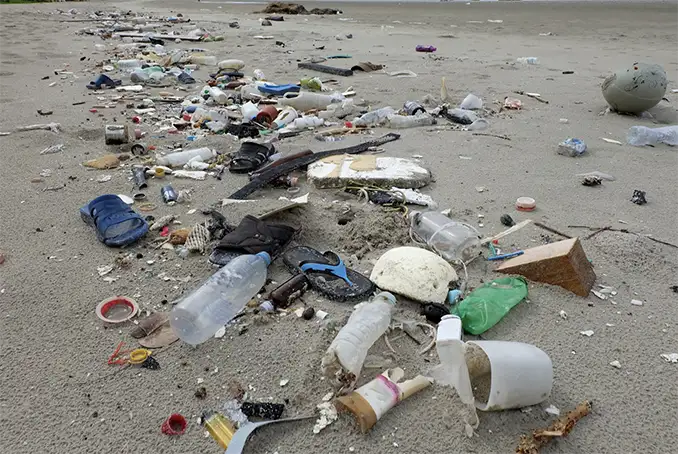
CORRELATION TO STANDARDS
-
AASL National School Library Standards
- Inquire Shared Foundation, Think Domain - Learners display curiosity and initiative by: 1. Formulating questions about a personal interest or a curricular topic. 2. Recalling prior and background knowledge as context for new meaning.
- Inquire Shared Foundation, Create Domain - Learners engage with new knowledge by following a process that includes: 1. Using evidence to investigate questions. 3. Generating products that illustrate learning.
- Inquire Shared Foundation, Grow Domain - Learners participate in an ongoing inquiry-based process by: 1. Continually seeking knowledge. 3. Enacting new understanding through real-world connections.
- Include Shared Foundation, Create Domain - Learners adjust their awareness of the global learning community by: 2. Evaluating a variety of perspectives during learning activities.
- Include Shared Foundation, Grow Domain - Learners demonstrate empathy and equity in knowledge building within the global learning community by: 2. Demonstrating interest in other perspectives during learning activities.
- Curate Shared Foundation, Create Domain - Learners gather information appropriate to the task by: 2. Collecting information representing diverse perspectives.
- Explore Shared Foundation, Think Domain - Learners develop and satisfy personal curiosity by: 1. Reading widely and deeply in multiple formats and write and create for a variety of purposes. 2. Reflecting and questioning assumptions and possible misconceptions.
- Explore Shared Foundation, Share Domain - Learners engage with the learning community by: 1. Expressing curiosity about a topic of personal interest or curricular relevance.
-
ISTE Standards for Students
- Knowledge Constructor - 1.3.d. Students build knowledge by actively exploring real-world issues and problems, developing ideas and theories and pursuing answers and solutions.
